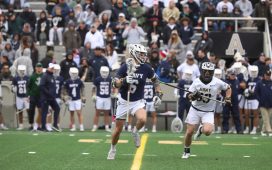Sidewinder gait in horses looks as odd as its name: An affected horse walks with his body and pelvis drifting out to one side; a severely affected horse may spin or circle with their hind legs moving in one direction and their thoracic limbs moving differently to compensate.
The disease is poorly understood, in part because it’s difficult for the horse to stand in one place or symmetrically load his hind limbs. Sidewinder gait can come on gradually or suddenly.
Drs. Monica Aleman, Emily Berryhill, Kevin Woolard, Charlotte Easton‐Jones, Tania Kozikowski‐Nicholas, Sue Dyson and Isabelle Kilcoyne hypothesized that the gait might be caused by neurologic or musculoskeletal issues. They completed a retrospective study of 37 horses that were seen for sidewinder gait at the William R. Pritchard Veterinary Medical Teaching Hospital at the University of California, Davis, and the Centre for Equine Studies at the Animal Health Trust in Newmarket, England, between 2000 and 2019.
Some horses were excluded from the study for a variety of reasons; the scientists used a total 24 horses for the study. They found that the average age of the affected horses was 18.9 years old and that sidewinder gait came on suddenly in 10 of the cases.
In total, 16 cases were caused by neurologic issues, including dynamic thoracolumbar spinal cord compression (five cases), equine protozoal myeloencephalitis (four cases), thoracic myelopathy (four cases), gliosis (two cases) and thrombosis of thoracic spinal cord segments (one case).
Eight cases of sidewinder gait were caused by non-neurologic reasons: osteoarthritis of the hip (four cases), multiple displaced pelvic fractures (two cases), rupture of the ligament at the femoral head (one case) and severe necrotic damage of pelvic muscles (one case).
The scientists reported that though short-term improvement was reported, the sidewinder gait remained unresolved in all horses. The fatality rate was nearly 80 percent (19 of the 24 horses). Of the horses that lived, not one resumed the level of previous activity.
The researchers determined that sidewinder gait is normally seen in older horses of any breed or sex and can have neurologic or musculoskeletal origins. The condition has a poor prognosis for function and life.
Read the study here.
Read more at HorseTalk.
New to the Paulick Report? Click here to sign up for our daily email newsletter to keep up on this and other stories happening in the Thoroughbred industry.
Copyright © 2021 Paulick Report.








